Meeting of the minds: UMMC goes to Mississippi Academy of Sciences
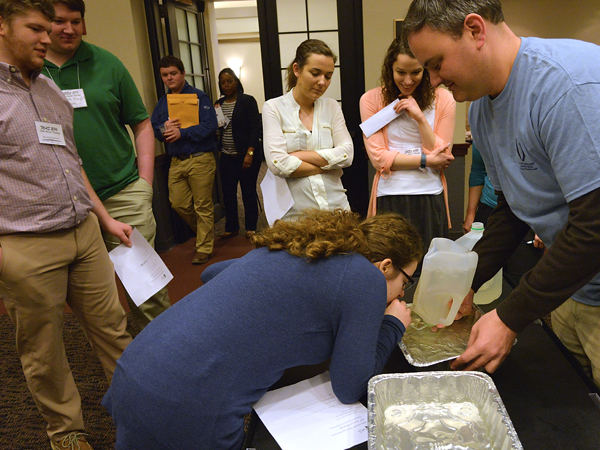
Published in News Stories on February 25, 2016
As one academy prepares for a big meeting in Los Angeles, the Mississippi Academy of Sciences headed to Hattiesburg for their own last week.
University of Mississippi Medical Center faculty, staff and students attended the Academy's 80th annual meeting Feb. 18-19 in the Thad Cochran Center at the University of Southern Mississippi.
This year's meeting was a great success with record attendance, says Dr. Ham Benghuzzi, professor of clinical health sciences and executive director of MAS.
“There were more than 750 meeting attendees representing all universities and colleges in the state,” Benghuzzi said. “The increase in abstracts and attendance is a reflection of how hard each of the division chairs worked.”
The mission of MAS is three-fold: to foster communication among scientists, promote science education and provide expertise to the wider state community.
Researchers from across the state gathered to present their work through posters and talks, representing the sciences from agriculture to zoology.
UMMC brought its biomedical and health sciences expertise to the event, not only as workshop leaders and featured speakers, but also with award-winning student posters.
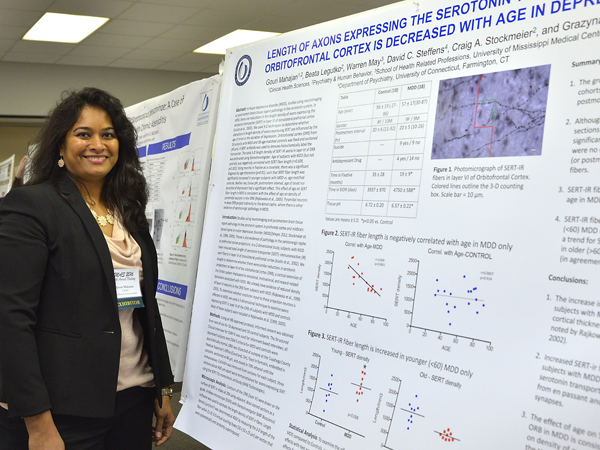
Mahajan won the INBRE graduate student poster award for her work on axon length changes in depression.
Gouri Mahajan, a PhD student in clinical health sciences, won first place in the Mississippi INBRE graduate scholars competition for “Altered serotonin expressing axon length in orbitofrontal cortex with age in depression.” She says that the combination of longer axons and inhibited serotonin firing strengthen the hypothesis that neurotransmitter system changes lead to major depressive disorder. It takes more time for messages to relay through the brain.
“I was pleasantly surprised and extremely happy to see my work being recognized on such a platform,” Mahajan said.
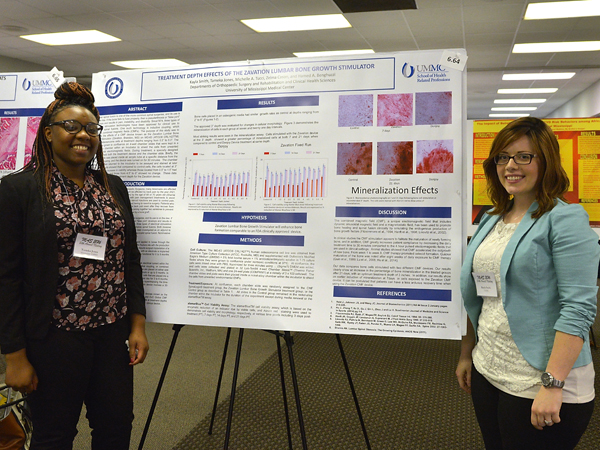
Tameka Jones, left, and Kayla Smith, SHRP Cytotechnology students, won best undergraduate student presentation for their work on bone nodule formation using a pulsed magnetic field.
Tameka Jones and Kayla Smith, bachelor's students in cytotechnology, won first place in the Millsaps/HHMI undergraduate scholars symposium for “Evaluation of bone nodule formation after stimulation using a pulsed magnetic field.” They determined an appropriate treatment depth for a device used to improve spinal fusion surgeries.
“It was a wonderful experience to attend the MAS meeting,” Smith said. She also thanked her mentor Dr. Michelle Tucci, professor of orthopaedic surgery, for her guidance on the project.
During a health sciences workshop, Belhaven University undergraduates curiously eyed baking tins, bendy straws and water-filled milk jugs on a table.
“This is not flotsam from my kitchen, it's actually a simple spirometer,” explained Dr. Eric George, assistant professor of physiology and biophysics.
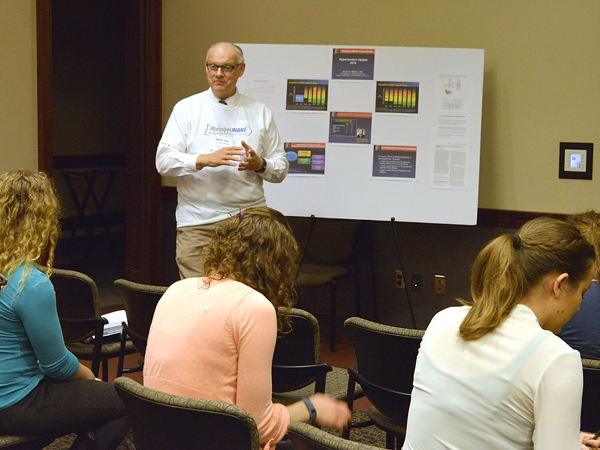
Dr. George Moll explains the basics of blood pressure to students at the Mississippi Academy of Sciences population health workshop.
George, Dr. Olga McDaniel, professor emeritus of surgery, and Dr. George Moll, professor of pediatrics, hosted a hands-on population health event where students assessed their vital statistics, including blood pressure, BMI and maximal lung volume.
So how does the spirometer work? A jug is turned upside-down into a tin. A student blows into the jug using a straw while another person holds the jug's opening mostly closed. As they blow, air replaces the expelled water. The lost water volume when they can't blow any longer is their lung capacity.
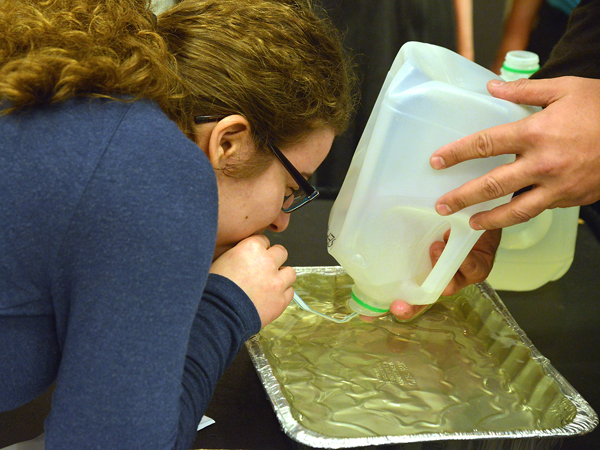
Krista Syrigos, a junior at Belhaven, takes a deep breath to measure her maximal breathing volume with the assistance of UMMC's Dr. Eric George.
Krista Syrigos, a junior biology major, stepped up to the challenge, expelling four liters out of the jug. From there, her classmates made it a competition to see who had the best lungs.
Next door the atmosphere was more collaborative. Dr. Rob Rockhold, deputy chief academic officer, facilitated an organizational meeting on simulation-based education in Mississippi.
Health professionals and educators provided updates on practices at the state's colleges and medical schools. Simulation training gives clinicians the chance to improve their skills and learn how to reduce patient harm in a professional setting.
“We want to raise awareness about simulation activities in Mississippi and explore new opportunities to build a solid framework,” Rockhold said.
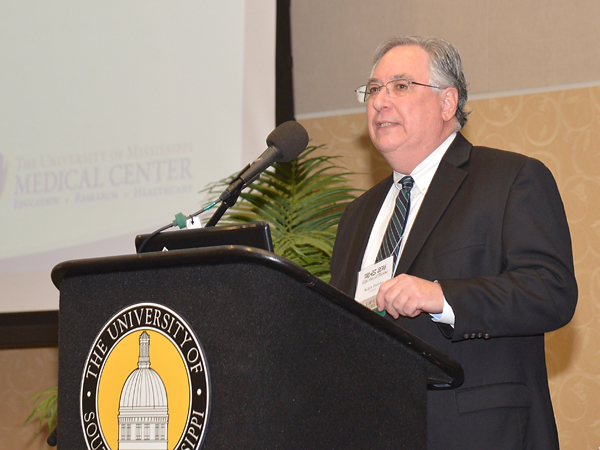
Didlake
Dr. Ralph Didlake, associate vice chancellor for academic affairs, presented “Professionalism in Science” at Friday's plenary session.
“If I claim to be a professional, then I must operate within certain boundaries,” Didlake said.
But what makes a good professional, scientist or otherwise? Didlake says they possess three key characteristics: professionals are excellent, ethical and engaged in what they do. As director of the Center for Bioethics and Medical Humanities at UMMC, he is particularly interested in that middle trait.
“Ethics is not often discussed in science education, but it should be,” Didlake said. Ethics provide scientists with a framework to use in their decision-making.
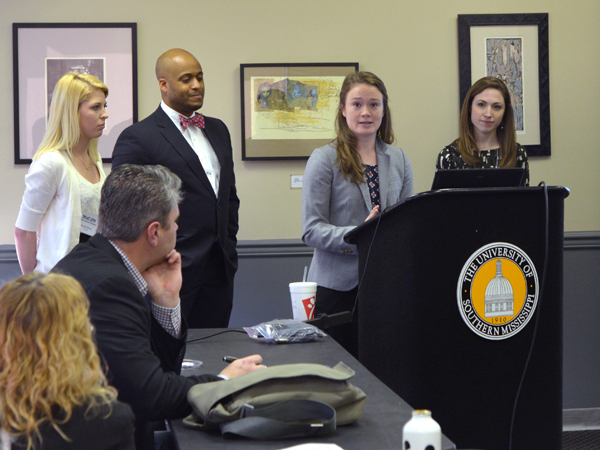
Rachel Sharp (left, standing), Jedd Audry, Lauren Williamson and Mary Ball Markow, students of Dr. Ralph Didlake, present "The lost art of medicine: archiving as a novel learning experience."
“We have profound ethical obligations as professors and scientists. Our responsibility is to produce knowledge and ask deeper questions in a more technology-driven world,” he said.
But even in this age of technology, he reminded the crowd of the importance of people.
“Everything scientists do is within a community,” Didlake said. “Science is a very human form of knowledge.”


